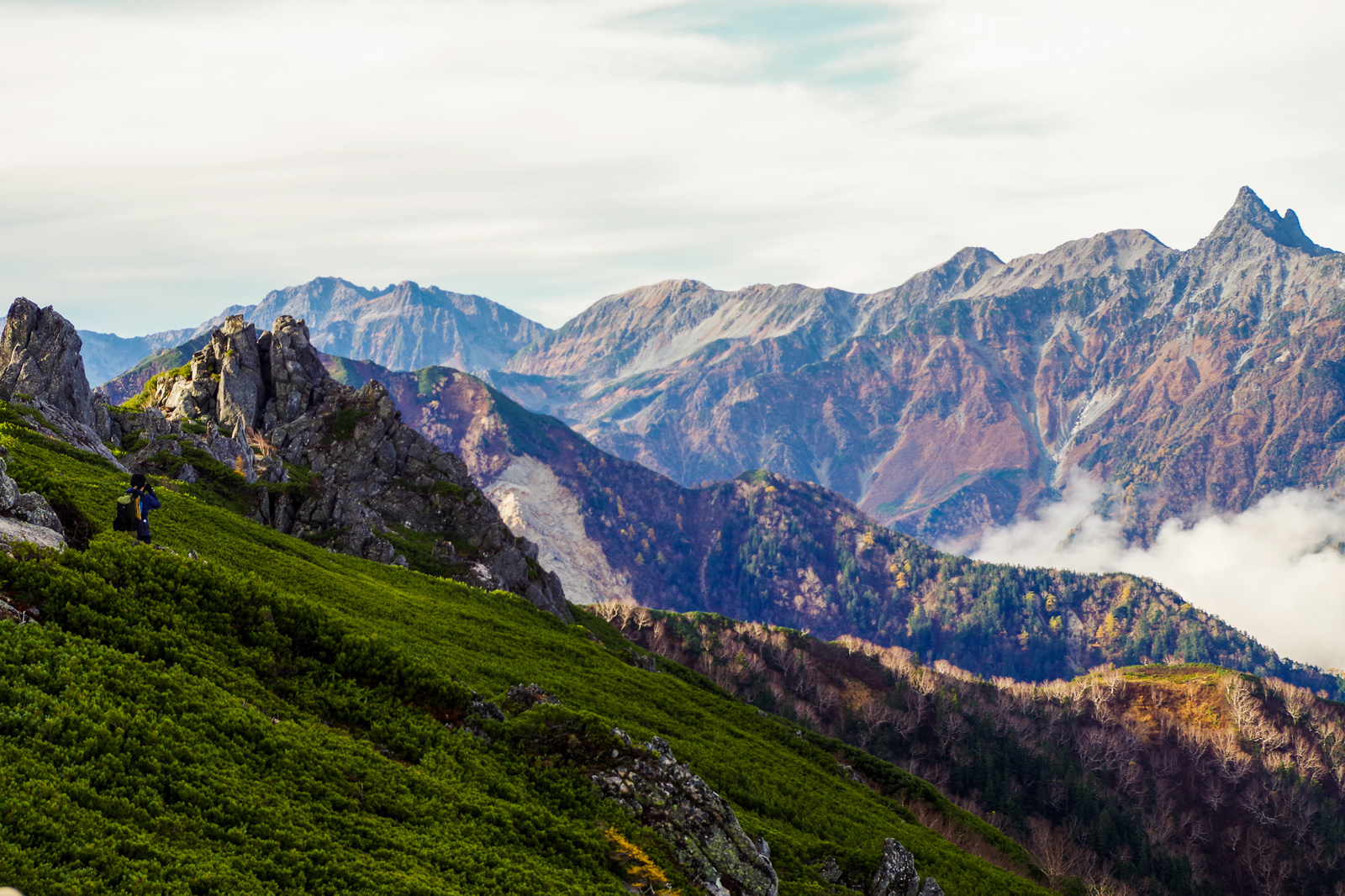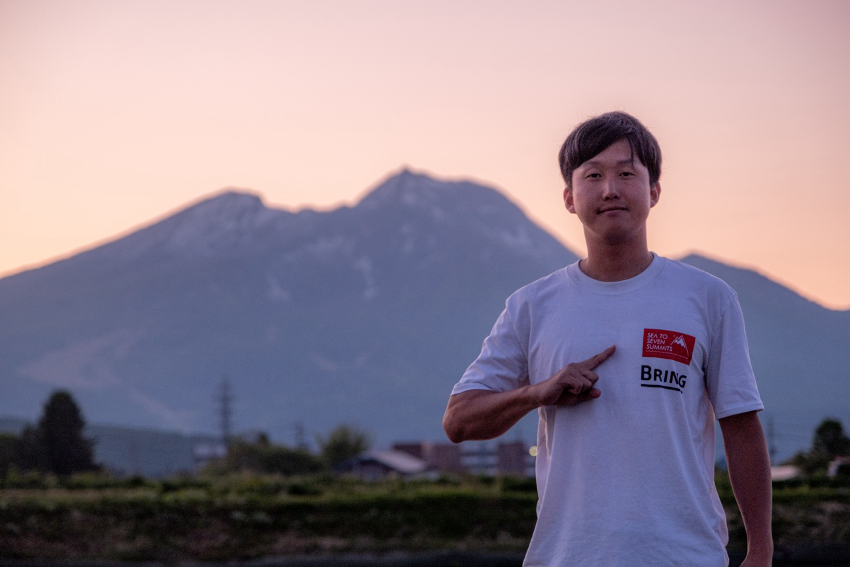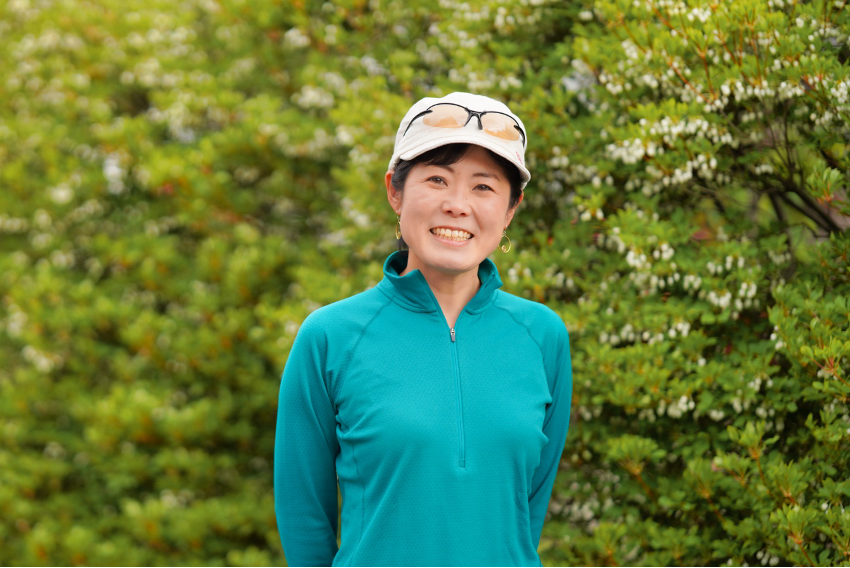
Using What I Know Best as a Local Interpreter Guide in My Hometown of Azumino
Certified in 2022 as an Azumino City Local Interpreter Guide and a Nagano Prefecture-certified Nagano Mountain Climbing Guide, I now work as a guide primarily in the Northern Alps area. Since I was born and raised in Azumino City in Nagano, my work is in a place that I love and have known since childhood.
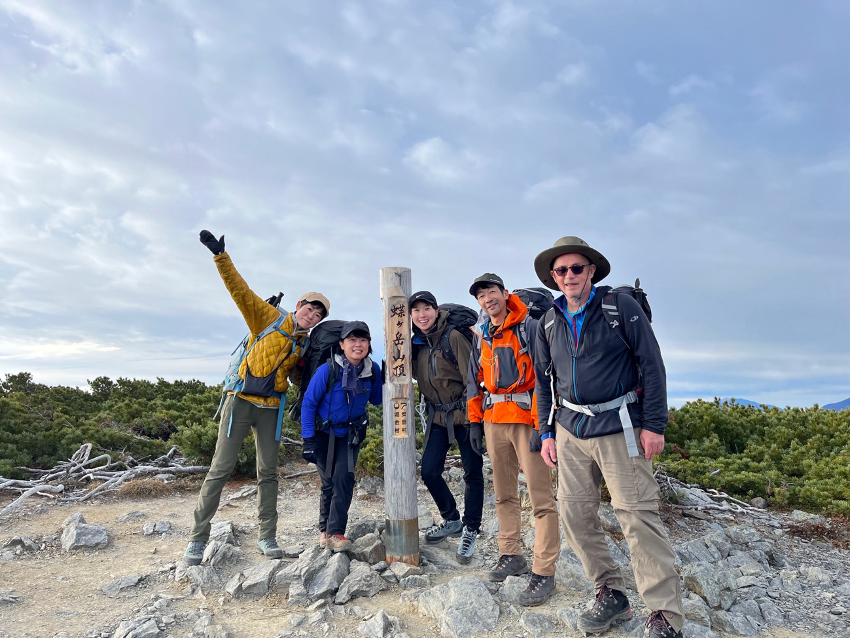
Going to Tokyo to attend university, I worked in magazine editing for about 15 years before moving back to my hometown. While I was familiar with mountain climbing, my lifestyle was so totally indoor-focused when I was working in the city that the idea of doing it was unthinkable. Since childhood, I hadn’t been very athletic, and I never thought I’d be guiding so many people in the mountains like this.
The first mountain I climbed after moving back to my hometown was a local mountain called Mt. Hikarujo, which a friend invited me to go climb to welcome me back. A small mountain with an elevation of 900 m, it’s well-known to locals and many people visit there in spring to see the cherry blossoms. At the time, I was so out of shape that I was short of breath after climbing the first few meters, but thanks to words of encouragement from a senior hiker, I managed to make it to the summit. The weather was nice that day, and even now I can clearly picture how the Northern Alps towered beyond the streets of Azumino. Naturally, I was moved by the beautiful view, but my heart also swelled with satisfaction as I thought, “I climbed a mountain with my own two feet.”
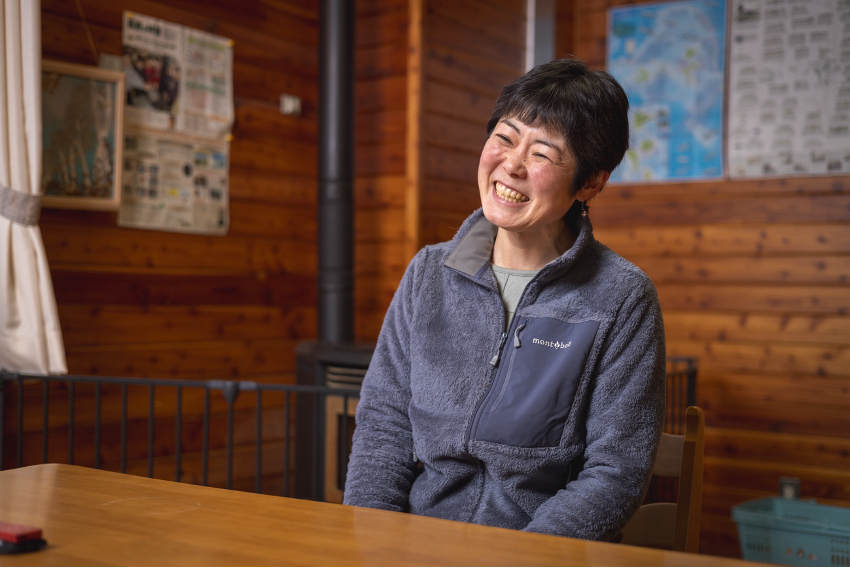
I became friends with the senior hiker that guided me that day, who then brought me here and there, and the next thing I knew I was hooked on mountain climbing. I have so many great memories of the mountain that started it all, Mt. Hikarujo, and the one beside it, Mt. Nagamine, and I still climb them often even now.
I’ve always been rather talkative, so I wanted someone to go mountain climbing with me, and I ended up inviting my children’s friends and their mothers, neighbors, and all kinds of people. I guided them out of joy at having someone to share the pleasure of mountain climbing with, but thinking back now, it’s also true that I was a little uneasy as a beginner. Deciding that I wanted to learn the skills to respond properly if there were an accident or injury, I became interested in an advertisement I saw for the Azumino City Local Interpreter Guide and Hiking Guide Course. At the time, I didn’t have skills like someone with many years of experience as a mountain climbing guide or a career working as an interpreter. However, I had a feeling that if it combined “mountains” with “English”, I could probably manage something there.
The training period was a year long, with over 100 hours of classroom learning and 10 days of on-the-job training. There was a practice exercise doing a 4-day/3-night traversal with foreign clients. The trail was the Nagano Azumino Northern Alps Panorama Ginza, running from Mt. Tsubakuro to Mt. Jonen and Mt. Chogatake.
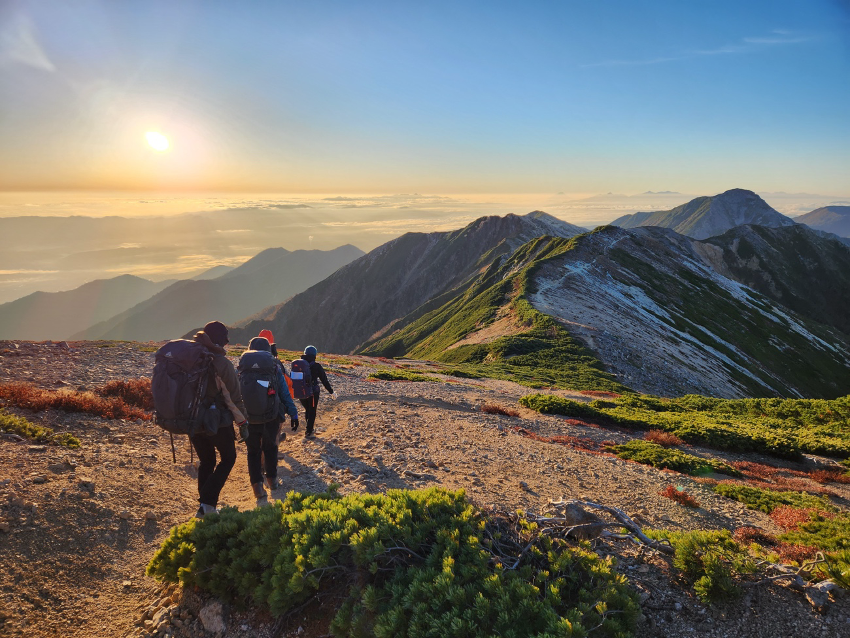 The second day after we set out there was some excitement, as we had a storm with wind and rain so strong we couldn’t keep moving. At that point, all us trainees were racking our brains about making a change of plans, but I think getting hit with that fierce rain during our studies increased the risks we could take and let us guide with confidence ever since.
The second day after we set out there was some excitement, as we had a storm with wind and rain so strong we couldn’t keep moving. At that point, all us trainees were racking our brains about making a change of plans, but I think getting hit with that fierce rain during our studies increased the risks we could take and let us guide with confidence ever since.
Risk Avoidance and Guiding My Own Way through Conversation
On the physical side, I’m no match for the sturdy male guides. But now, I think there are kinds of risk control and trail choices I can only make because of who I am. Planning is required to keep from making it too hard for people who need a guide’s support, such as beginners and those who aren’t confident they’re strong enough, women and children, and senior citizens. I want to give them a safe and pleasant mountain climbing experience, because I know precisely how it feels to think, “I’m not sure I’m really strong enough, but I still want to climb that mountain.” I check the trail as carefully as I can, cautiously gauge the trail time, and make the decision not to go when the weather or other conditions are precarious.
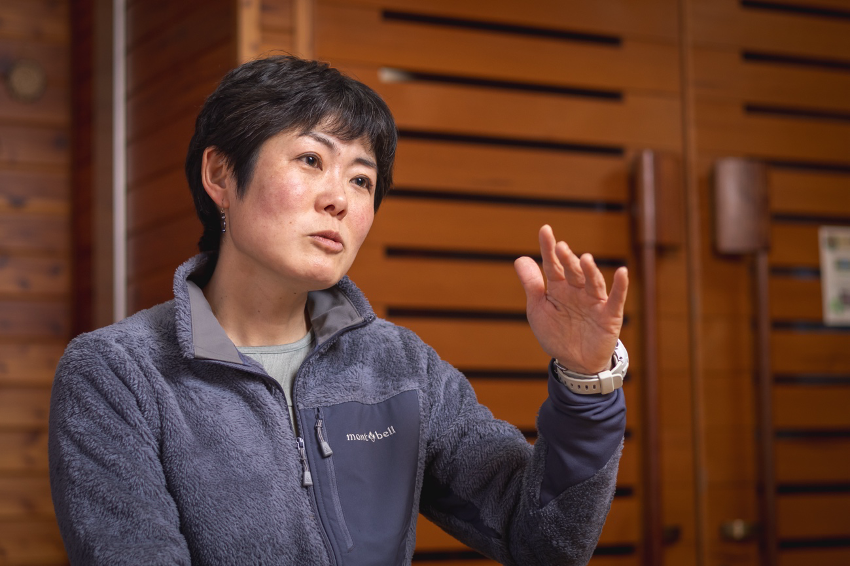
While guiding, I always keep in mind making pleasant memories with the clients. “Today is awesome, right?” “What a great day it turned out to be!” “The fall leaves are beautiful!” I say those kinds of things so they can’t help but talk about what they felt or enjoyed. When the clients get tired, they might not be looking anywhere except down at their own feet, but a lot of times they’ll hear me and say, “Oh, you’re right,” making note of the beautiful scenery again. Many of my clients are women, but one of the things that defines me might be that I can get people talking about different things regardless of gender, nationality, or age. I’m not really conscious of it, but in the flow of conversation I just naturally hear what the clients like or are good at, what makes them happy, and so on, and how we spend our time often reflects those things. It may be a combination of how my personality has always been and the skills I gained working in editing.
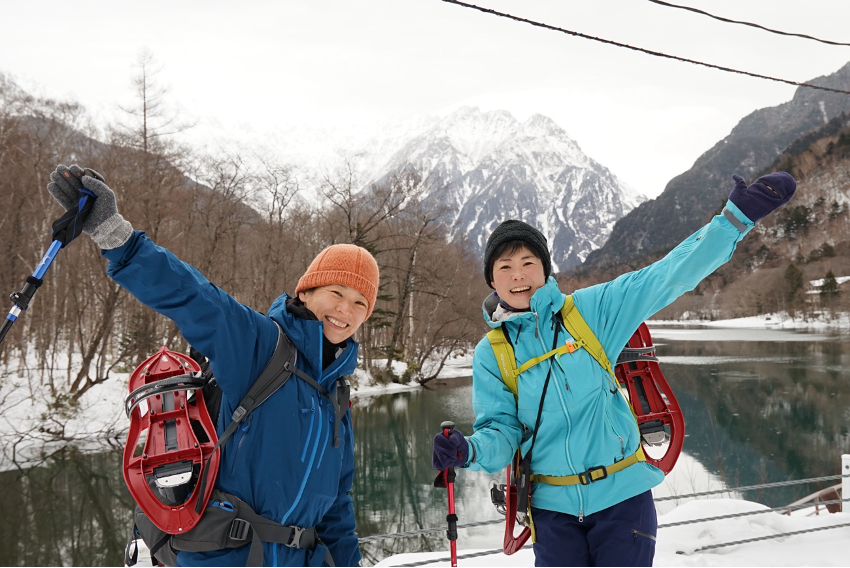
The other day, an 80-year-old woman hired me, and we climbed Mt. Tsubakuro with three of her family members. To leave us plenty of leeway, I figured a trail time of 1.8 times normal duration, and the first day we arrived at the mountain hut right on schedule. The following day we enjoyed the scenery in the morning, but since it was raining in the afternoon, I suggested we all take a nap in the mountain hut. This was someone who is very active and hardworking every day, so she said, “Taking it easy sounds so indulgent,” with such joy it really stuck with me. After we came back down the mountain, she told me, “I liked that idea about taking a nap the best,” and that made me happy, too.
Updating Foreign Support After the Pandemic
I got my guide certification in January 2022 during the pandemic, so at first. I was only guiding Japanese customers, but from 2023 the number of clients from overseas suddenly increased. From my basic experience of the business, it was time to update my guiding, and I really learned a lot in my most recent training.
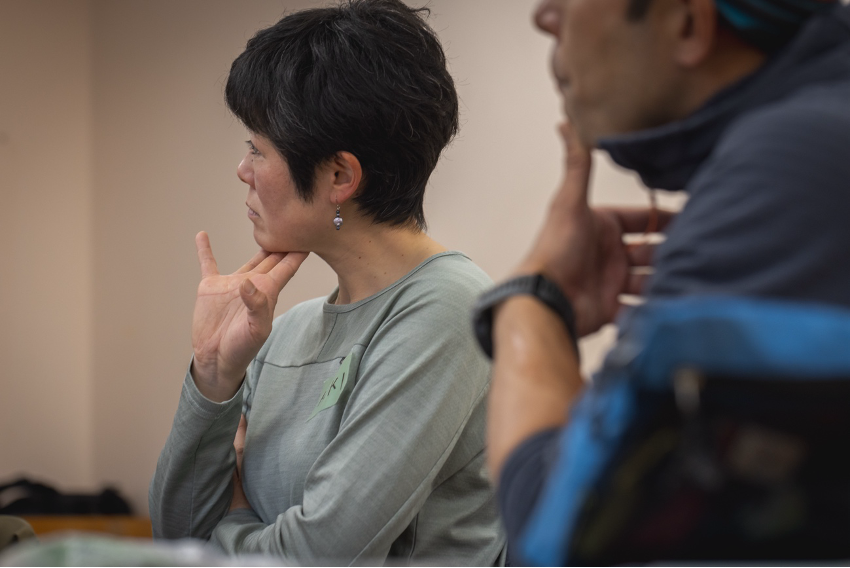
What sticks with me the most is the teacher telling us, “Communication isn’t about using difficult English or proper English.” Out in the field, I avoid using difficult vocabulary I’m not good with and communicate by replacing it with the English I know instead. I feel that my vocabulary is lacking and I need to work on things like technical jargon and the English names for plants and animals, but difficult technical jargon will often mean nothing to native speakers, either, and we were told that our expression, mannerisms, and consideration are the most important things for conveying to them what’s in our hearts. I don’t think the kind of communicating I’ve been doing up until now was wrong, and that has made me more confident.
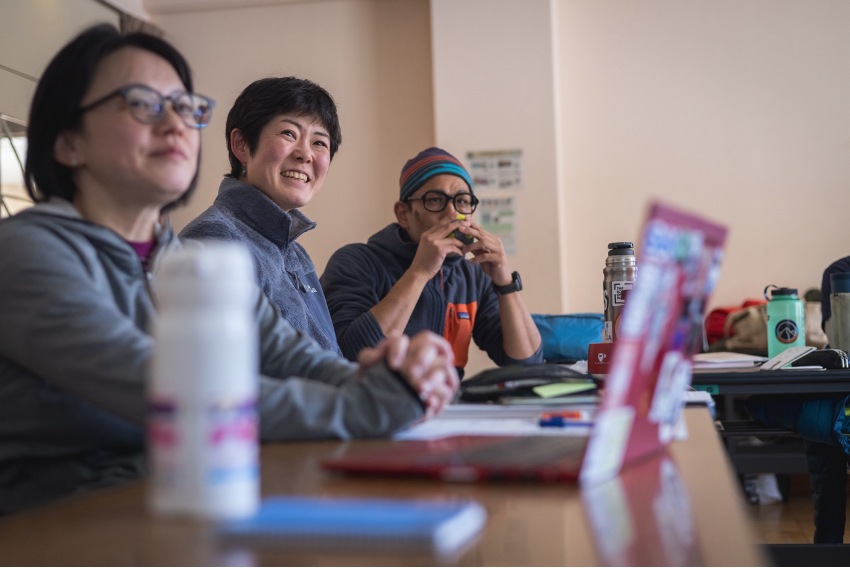
On the other hand, we also learned the importance of being able to speak English to reassure clients in an emergency. No matter how well you know it in your head, if you aren’t calm and comfortable enough, you can’t handle a sudden accident. In the future, I’ll continue to brush up my skills for responding to emergencies as I pool information with others I’ve met and more experienced guides, doing all that I can to provide even safer and more enjoyable guiding.
Just Seeing Mt. Fuji Isn’t Enough, I Want to Show People the Charms of Local Mountains
What I aim to do is to be a guide who conveys the goodness of mountain living and people, and one who can lead people all around the area, from the summit of tall mountains like the Northern Alps to the foothills. People say that water abounds in Azumino City, and all that water flows from the Northern Alps. Water welling up from the mountains moistens the earth, a boon that allows people to live. People go into the mountains to pick edible wild plants in spring and mushrooms in fall, to cultivate fields and rice paddies, and to hunt. I feel this state that comfortably links the mountains and people is unique to Nagano Prefecture. I want people who climb the Northern Alps to know the unique culture and history of the local area, including how people live in mountain villages.
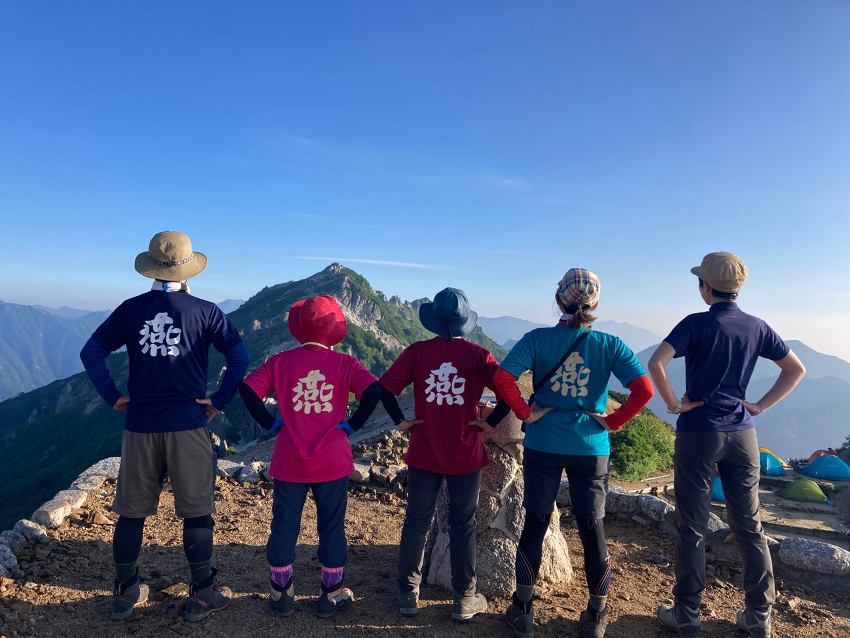
Lately, I recommend a tour around the winter mountain villages from late fall in November to early spring. Actually, the area around Azumino City is dotted with the remnants of castles from the Warring States period and once the leaves fall, you can really see the unique geography. One fun thing to do atop the mountain is to let your mind wander over where the enemy would come from, and how you could defend the territory against them. In addition, mountains with a religious backdrop still have the remnants of place for rain-making rituals or shrines to the god of thunder. The history and culture that remain from antiquity are things I’d also like to convey in my role as a guide.
I’d like to share the charms of local mountains more with people overseas. Mt. Fuji is the most popular, of course, but when I guide people on the mountains of the Northern Alps after that, they say, “I didn’t think there were such wonderful mountains in Japan.” Naturally, the mountains themselves are beautiful with their abundance of greenery and water, but there are also the lots of unseen charms like the consideration shown by the people at the mountain huts, so I really hope people will come out here.
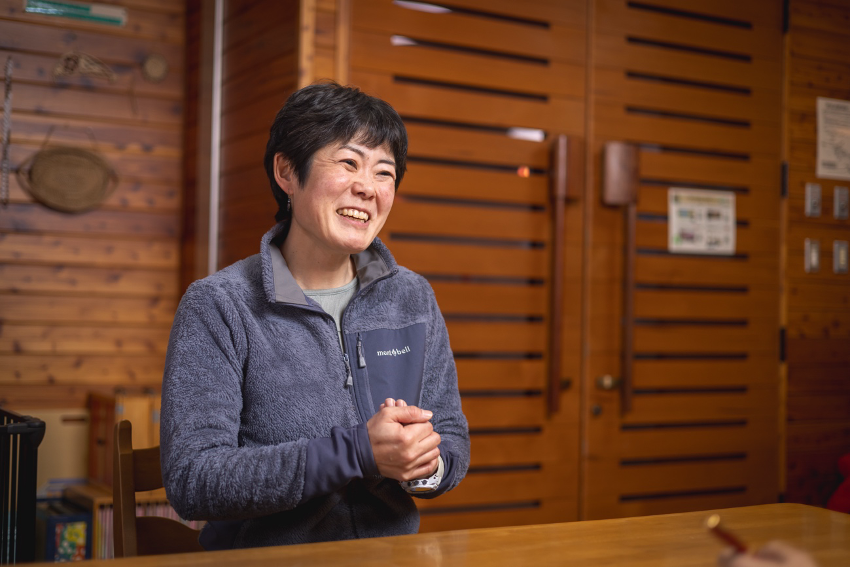
Furthermore, I’d like to create an opportunity for customers to meet local people. Super senior hikers who climb the Northern Alps on a day trip, guides who are well-versed in the history of the Warring States period, experts at making pickles, soy sauce masters, students at a lacquerware technical school, Japanese gardeners, and very picky farmers—there are so many interesting people like these all around me. I’ll be happy if I get people to feel, “The mountains and people in Nagano are so nice!”, and I really want them to experience the secret to living healthily in body and mind in this area.

